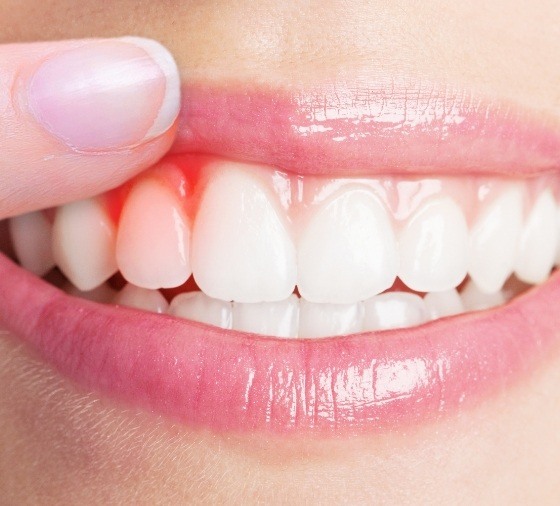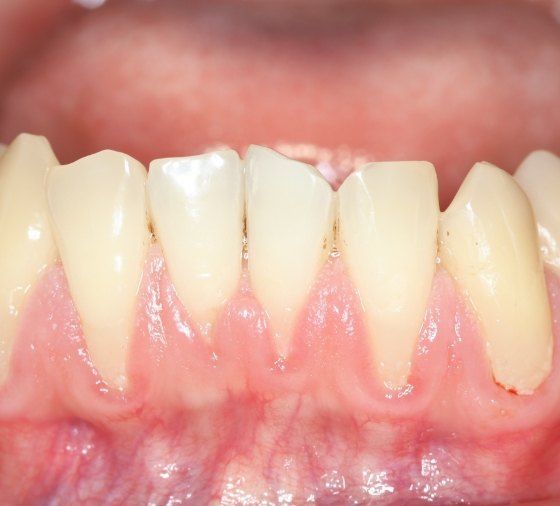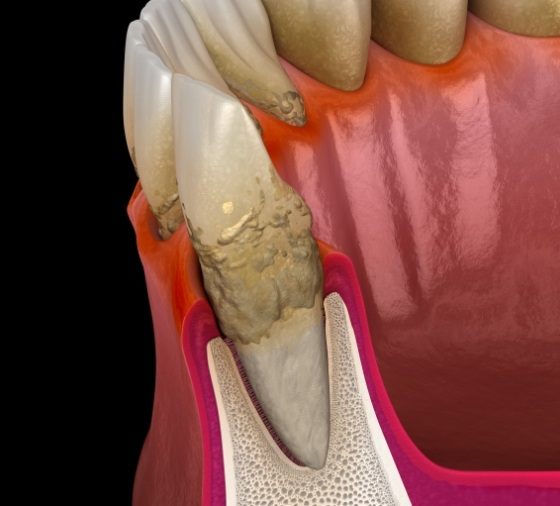Stages of Gum Disease – Baltimore, MA
How Serious is Your Periodontal Disease?
Did you know that an estimated 75% of Americans have some form of gum disease? Are you aware that gum disease not only creates otherwise avoidable dental problems, but also increases the risk of health complications including diabetes, heart disease, stroke, and premature births/ low birth weight? However, would you believe that with daily brushing and flossing, along with regular check-ups, gum disease is largely preventable?
Why Choose Harbor Periodontics for Gum Disease Treatment?
- Led by a Board-Certified Periodontist
- Friendly, Knowledgeable Team with Decades of Experience
- LANAP® and Other Advanced Treatments
Stage 1: Gingivitis

The earliest stage of gum disease is called gingivitis. Gingivitis occurs when plaque builds up around the gums. This built-up plaque traps bacteria at your gum line, causing inflammation. Trapped bacteria will cause an infection and further stages of gum disease. The progress of gingivitis is reversible because no damage has yet occurred to the bones and tissue holding your teeth in place.
Signs of gingivitis include red or swollen gums. Additionally, bleeding may occur during regular brushing or flossing. (Healthy gums will not bleed as a result of daily hygiene.)
Stage 2: Periodontitis

When left untreated, gingivitis progresses to the second stage of gum disease called periodontitis. In this pivotal stage, structural damage occurs to the bones and tissue holding your teeth in place. This damage can only be repaired through professional treatment and surgery. Plaque and bacteria that built up during gingivitis create pockets in the gums. These pockets are hollow areas at the base of the teeth which will hold plaque, food, and bacteria deeper within your gums. Immediate treatment is required to address these issues and prevent further damage and tissue or bone loss.
Periodontitis causes visible signs like your gums receding and gaps forming in between your teeth. It can also cause chronic bad breath or even a bad taste in someone’s mouth. At times, pus may emit from the gums.
Stage 3: Advanced Periodontitis

If initial symptoms of periodontitis are left untreated, the gum disease will progress to advanced periodontitis. In this final stage, the bacteria existing in gum pockets spread throughout the gums, destroying the connective tissue and bones that support your teeth. The pockets that were formed during Stage 2 become significantly deeper, which can allow teeth to loosen or shift, potentially altering your bite. Aggressive treatment is required to combat the systemic problems caused by gum disease.

